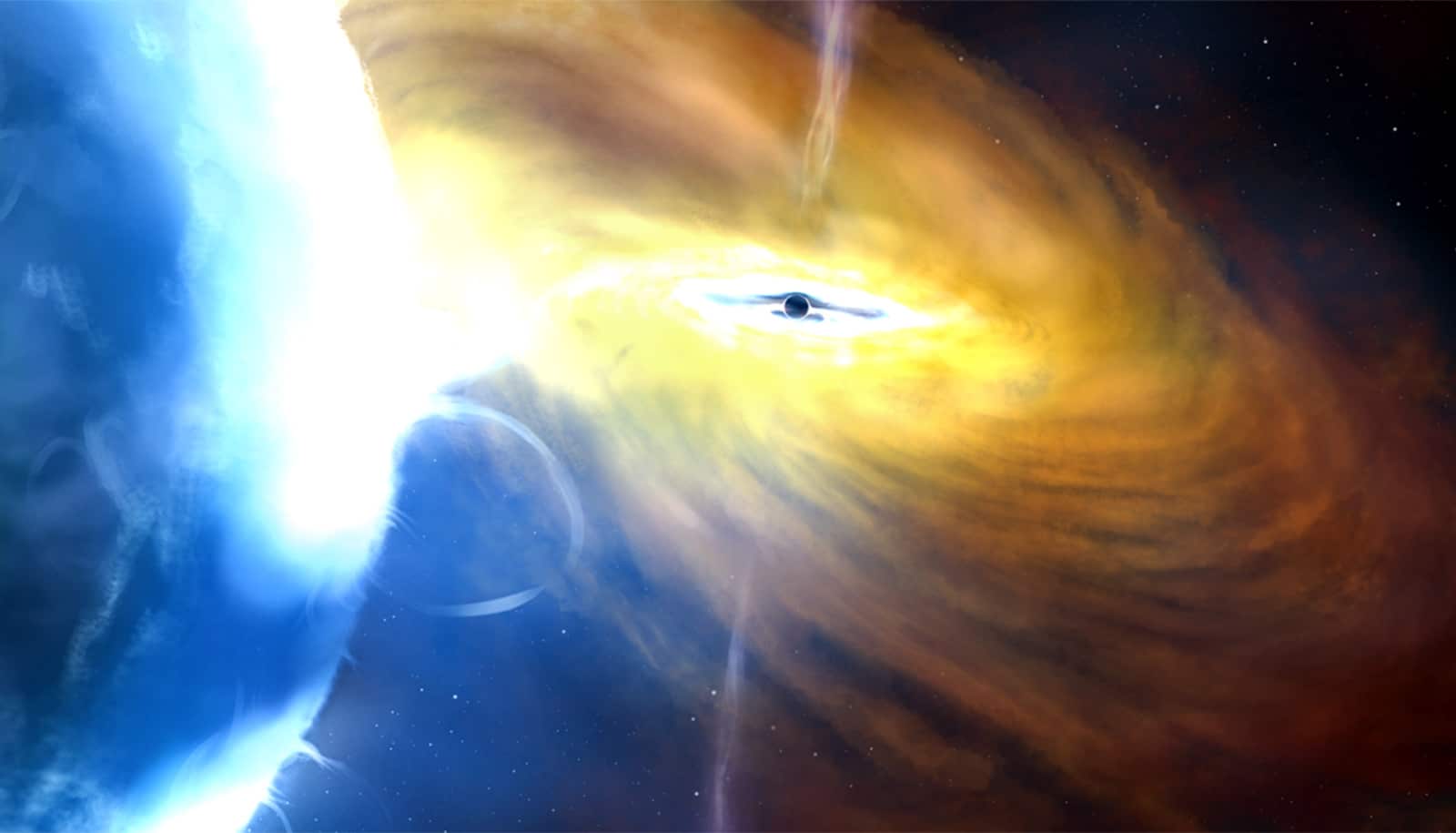Astronomers have discovered a galactic table for two—a pair of unusually close black holes that are feeding together after their respective galaxies collided.
The finding could have a profound impact on our understanding of later-stage galaxy mergers and suggests that the phenomenon of side-by-side black holes occurring during a merger may be more common than previously known.
“Relatively few dual black holes like this have ever been confirmed,” says Meg Urry, professor of physics and astronomy at Yale University and director of the Yale Center for Astronomy & Astrophysics. “This pair has the closest separation yet measured, only about 750 light years.”
Urry, part of the international research team that made the discovery, is coauthor of the new study in The Astrophysical Journal Letters and presented at the 241st meeting of the American Astronomical Society in Seattle on January 9.
A considerable body of research exists on the early phases of galactic mergers, which occur when gravity slowly draws two or more galaxies together. However, relatively little is known about the later stages. A key component in such mergers is the behavior of black holes—areas of space that have intense gravity and can grow by gobbling up gas and dust from their immediate surroundings.
For the study, astronomers enlisted a variety of powerful instruments to observe the late-stage merger of the galaxy UGC4211, located 500 million light years from Earth in the constellation Cancer. Using multiple instruments enabled researchers to observe the side-by-side black holes in different wavelengths and gather a more complete picture of the phenomenon.
Urry contributed data from the W.M. Keck Observatory’s OSIRIS near-infrared field spectrograph in Hawaii; Yale has maintained a years-long association with Keck that has yielded significant data.
“It’s super important that we can make these kinds of observations with Keck,” Urry says. “First, with Keck’s NIRC2 instrument, to survey the remnants of galaxy mergers to find hidden dual nuclei—supermassive black holes that will eventually merge—and then, in this particular case, to confirm the presence of two galactic nuclei with Keck’s OSIRIS near-infrared field spectrograph.
“OSIRIS found broad infrared lines in the southern nucleus, confirming it is certainly an active galactic nucleus, and measured the velocity offset between the two nuclei.”
Data from the Atacama Large Millimeter/submillimeter Array (ALMA)—an international observatory co-operated by the US National Science Foundation’s National Radio Astronomy Observatory—enabled astronomers to find the exact location of the two black holes in the UGC4211 galaxy. Additional data came from the Chandra and Hubble telescopes, the ESO’s Very Large Telescope, and the Dark Energy Camera Legacy Survey (DECalS) on the Blanco 4-meter telescope at Cerro Tololo Inter-American Observatory.
“Simulations suggested that most of the population of black hole binaries in nearby galaxies would be inactive because they are more common, not two growing black holes like we found,” says Michael Koss, a senior research scientist at Eureka Scientific and the lead author of the new research.
Koss added that the use of ALMA was a game-changer, and that finding two black holes so close together in the nearby universe could pave the way for additional studies of the phenomenon.
Urry and her colleagues says that if close-paired binary black hole pairs are indeed commonplace, there could be significant implications for future detections of gravitational waves, as well.
“It will help us develop estimates of black hole merger rates for future gravitational wave detectors,” Urry says.
Source: Yale University



